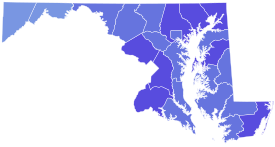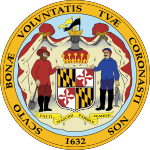
The 1964 United States Senate elections were held on November 3. The 33 seats of Class 1 were contested in regular elections. Special elections were also held to fill vacancies. They coincided with the election of President Lyndon B. Johnson by an overwhelming majority, to a full term. His Democratic Party picked up a net two seats from the Republicans. As of 2022, this was the last time either party has had a two-thirds majority in the Senate, which would have hypothetically allowed the Senate Democrats to override a veto, propose constitutional amendments, convict and expel certain officials, or invoke cloture without any votes from Senate Republicans. In practice, however, internal divisions effectively prevented the Democrats from doing so. The Senate election coincided with Democratic gains in the House in the same year.

The 1938 United States Senate elections occurred in the middle of Franklin D. Roosevelt's second term. The 32 seats of Class 3 were contested in regular elections, and special elections were held to fill vacancies. The Republicans gained eight seats from the Democrats, though this occurred after multiple Democratic gains since the 1932 election, leading to the Democrats retaining a commanding lead over the Republicans with more than two-thirds of the legislative chamber.

The 1936 United States Senate elections coincided with the reelection of President Franklin D. Roosevelt. The 32 seats of Class 2 were contested in regular elections, and special elections were held to fill vacancies. The Great Depression continued and voters backed progressive candidates favoring Roosevelt's New Deal in races across the country. The Democrats gained 5 net seats during the election, and in combination with Democratic and Farmer–Labor interim appointments and the defection of George W. Norris from the Republican Party to become independent, the Republicans were reduced to 16 seats. The Democrats' 75 seats and their 59-seat majority remain their largest in history.

The 1938 United States House of Representatives elections was an election for the United States House of Representatives were elections for the United States House of Representatives to elect members to serve in the 76th United States Congress. They were held for the most part on November 8, 1938, while Maine held theirs on September 12. They occurred in the middle of President Franklin D. Roosevelt's second term. Roosevelt's Democratic Party lost a net of 72 seats to the Republican Party, who also picked up seats from minor Progressive and Farmer–Labor Parties.
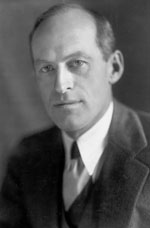
Millard Evelyn Tydings was an American attorney, author, soldier, state legislator, and served as a Democratic Representative and Senator in the United States Congress from Maryland, serving in the House from 1923 to 1927 and in the Senate from 1927 to 1951.
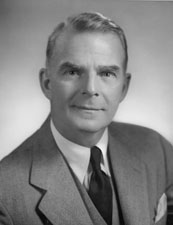
John Marshall Butler was an American lawyer and politician. A Republican, he served as a United States Senator from Maryland from 1951 to 1963.

Joseph Davies Tydings was an American lawyer and politician. He was most notable for his service as a Democratic member of the United States Senate representing Maryland from 1965 to 1971.
George Perry Mahoney was an Irish American Catholic building contractor and Democratic Party politician from the State of Maryland. A perennial candidate, Mahoney is perhaps most famous as the Democratic nominee for Governor of Maryland in 1966. In his campaign he used the slogan "Your home is your castle; protect it."

The 1932 United States Senate election in Maryland was held on November 8, 1932. Incumbent Democratic U.S. Senator Millard Tydings was re-elected to a second term in office, defeating Republican Wallace Williams.

The 1956 United States Senate election in Maryland was held on November 6, 1956. Incumbent Republican U.S. Senator John Marshall Butler was re-elected to a second term in office, defeating Democratic businessman George P. Mahoney.
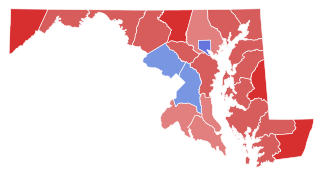
The 1970 United States Senate election in Maryland took place on November 3, 1970. Incumbent Democratic U.S. Senator Joseph Tydings ran for re-election to a second term, but was narrowly defeated by Republican U.S. Representative J. Glenn Beall Jr.

The 1920 United States Senate election in Maryland was held on November 2, 1920. Incumbent Democratic U.S. Senator John Walter Smith ran for re-election to a third term in office, but was beaten by Republican Ovington Weller.

From March 12 to June 27, 1940, voters of the Democratic Party elected delegates to the 1940 Democratic National Convention through a series of primaries, caucuses, and conventions. Incumbent President Franklin D. Roosevelt was selected as the party's presidential nominee despite not formally declaring a campaign for a third term. Supporters effectively drafted Roosevelt, who was non-committal about seeking re-election, amid rising concerns over war in Europe.

The 1950 United States Senate election in Maryland was held on November 7, 1950. Incumbent Democratic U.S. Senator Millard Tydings ran for a fifth term in office, but was defeated by Republican John Marshall Butler.

The 1916 United States Senate election in Maryland was held on November 7, 1916.
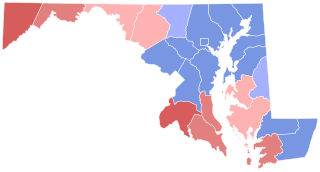
The 1914 United States Senate election in Maryland was held on November 2, 1914. Incumbent Democratic U.S. Senator John Walter Smith was re-elected to a second term in office over Republican Edward Carrington Jr.

The 1926 United States Senate election in Maryland was held on November 2, 1926. Incumbent Republican U.S. Senator Ovington Weller ran for re-election to a second term in office, but was beaten badly by Democratic U.S. Representative Millard Tydings of Havre de Grace.

The 1944 United States Senate election in Maryland was held on November 7, 1944. Incumbent Democratic U.S. Senator Millard Tydings was re-elected to a fourth term in office over Republican Blanchard Randall Jr.

The 1946 United States Senate election in Maryland was held on November 5, 1946.

The 1964 United States Senate election in Maryland was held on November 3, 1964.
